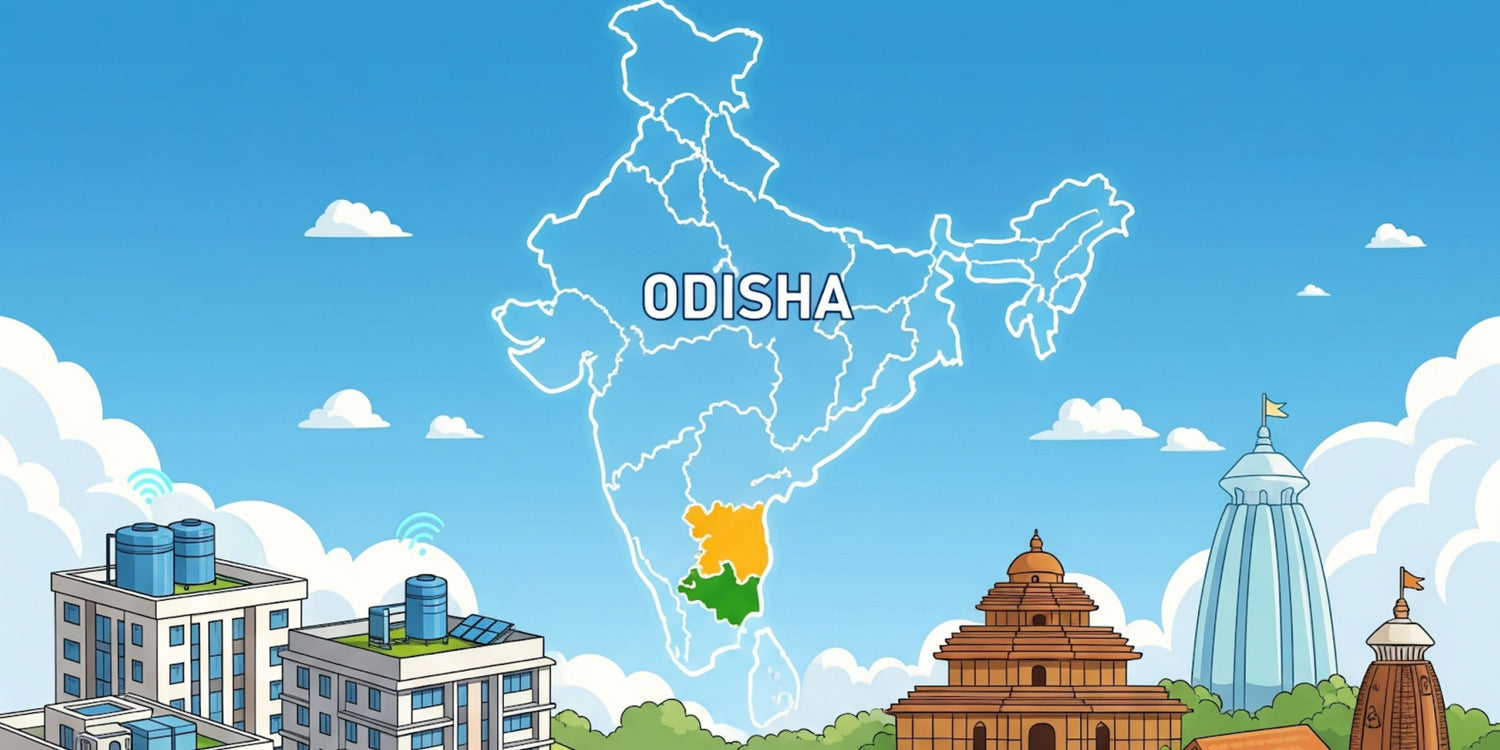A Timely Step in Water Security
As climate risks grow, so does the urgency to secure essential resources—especially water. In India, where monsoons often arrive unevenly and unpredictably, efficient water management is no longer optional. That’s why Odisha’s CHHATA rainwater harvesting scheme has been hailed as a forward-thinking solution to support water conservation and climate resilience.
This initiative doesn’t just preserve water—it helps build healthier communities, reduce urban water stress, and stabilise groundwater levels. It reflects how governance and technology can work together to safeguard human well-being.
If you're wondering what Rainwater Harvesting is and why it's so crucial now, it’s a process where rainwater is collected and stored for reuse, rather than letting it run off. It’s a simple idea, but its impact on health, agriculture, and long-term sustainability is profound.
Understanding the CHHATA Scheme
CHHATA stands for Community Harnessing and Harvesting of Rainwater Artificially from Terrace to Aquifer. Initiated by the Government of Odisha, the scheme aims to encourage the installation of Rainwater Harvesting Systems in urban and semi-urban areas, including homes, schools, and public buildings.
This effort is particularly relevant under YMYL (Your Money or Your Life) content categories, as water access directly affects:
-
Public health
-
Personal well-being
-
Environmental safety
-
Local economies
By providing incentives and subsidies, Odisha is enabling safer, cleaner, and more accessible water for its citizens—strengthening both physical infrastructure and community health.
How Does the CHHATA Scheme Work?
The scheme provides financial and technical support to install rooftop-based Rainwater Filter Harvesting units. These systems channel rainwater through Rain Harvesting Accessories like gutters, pipes, and filtration units into either underground recharge pits or above-ground storage tanks.
Key Goals of the Scheme
-
Improve groundwater levels
-
Reduce dependency on piped or tanked water
-
Mitigate urban flooding by managing rainwater runoff
-
Promote long-term ecological balance
Choosing the Right Rainwater Harvesting System: Why It Matters
Not all Rainwater Harvesting Systems are created equal. Quality, design, and efficiency play a massive role in the safety and usability of harvested water. Poor setups can lead to health hazards, contamination, and ineffective results.
This is where proper filtration becomes critical. Using the right filters ensures that debris, pollutants, and microbial impurities are removed before water reaches tanks or recharges the ground.
Reliable Filtration Solutions Backed by Experience
Rainy Filters provides state-of-the-art solutions that align with both health and environmental standards. Their advanced filter models support the CHHATA scheme's mission of creating a safe and sustainable water ecosystem.
Popular Filter Models
-
Rainy Filter FL 80 – Designed for residential buildings with smaller rooftops.
-
Rainy Filter FL 150 – Perfect for schools, clinics, and medium-sized spaces.
-
Rainy Filter FL 250 – Offers higher capacity for apartments and government offices.
-
Rainy Filter FL 350 – Designed for high-volume water flow, ideal for urban areas.
-
Rainy Filter FL 500 – Built for industrial complexes and large institutions.
These filters come equipped with Rain Harvesting Accessories that meet international standards, ensuring long-term durability and high water purity levels.
Health, Safety & Sustainability: Why CHHATA Is a Game-Changer
Water is fundamental to health. Unsafe water sources can lead to waterborne diseases, malnutrition, and even chronic health issues. That's why Odisha’s focus on safe rainwater harvesting through certified systems and expert-backed setups directly influences public health outcomes.
Benefits Backed by Public Interest
-
Clean Water Access – Reduces reliance on potentially contaminated surface or ground sources.
-
Mental and Physical Wellness – Stable water access decreases stress in water-scarce areas.
-
Urban Hygiene – Prevents mosquito breeding and stagnant water issues by managing runoff.
-
Climate Preparedness – Futureproofs cities against increasing rainfall variability.
How to Participate in the CHHATA Scheme
Residents, institutions, and government bodies in Odisha can easily apply through the CHHATA portal. The process is transparent and includes technical guidance on:
-
Site assessment
-
Choosing compatible filters and units
-
Installation support
-
Post-installation training
Individuals can further enhance their rainwater setup by selecting tested and reliable filters like Rainy Filter FL 150 or FL 250, ensuring the system runs efficiently for years.
Transparent Choices Lead to Safer Communities
When investing in a Rainwater Harvesting System, ensure the following:
-
The system includes a certified filter.
-
The accessories are non-toxic and weather-resistant.
-
Maintenance support is available.
-
A trained technician carries out installation.
By choosing verified systems, you’re not only complying with guidelines under the CHHATA scheme but also protecting your family's health and your community's ecosystem.
A Smarter Future Starts With the Right Technology
Odisha’s CHHATA scheme is already gaining momentum, but its long-term success depends on individual choices. Opting for well-researched, health-conscious filtration solutions ensures you’re not just conserving water—but doing it the right way.
If you’re planning to install or upgrade a system, don't compromise on quality. The impact on your home’s health, water quality, and sustainability is too significant.
Explore a full range of filters, including Rainy Filter FL 80, FL 150, FL 250, FL 350, and FL 500 models, only at Rainy Filters—designed for smarter rain harvesting.
Key Takeaways
-
The CHHATA rain water harvesting scheme is Odisha’s climate-resilient solution to water scarcity.
-
It encourages public and private institutions to adopt Rainwater Harvesting System.
-
The scheme supports clean water, public health, and environmental safety—core elements of YMYL content.
-
Filters like Rainy Filter FL 250 and Rainy Filter FL 150 play a vital role in ensuring safe rainwater.
-
Verified Rain Harvesting Accessories ensure systems remain effective and hygienic long-term.
FAQs
1. Is the CHHATA scheme applicable across India?
No. Currently, the CHHATA scheme is specific to Odisha. However, similar models are being proposed in other Indian states.
2. How does rainwater harvesting improve health?
By reducing dependence on contaminated or unreliable sources, it ensures safer water for drinking, cooking, and hygiene.
3. Do Rainy Filters meet government quality standards?
Yes. Rainy Filters are tested for performance, safety, and durability—making them compatible with state-approved schemes.
4. Can rainwater harvesting reduce my water bill?
Absolutely. Storing and using rainwater can reduce dependency on municipal supply, saving you money in the long run.
5. Are Rainy Filters easy to maintain?
Yes. Most models require minimal maintenance and are designed for easy cleaning, ensuring efficient long-term use.

